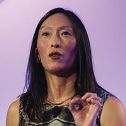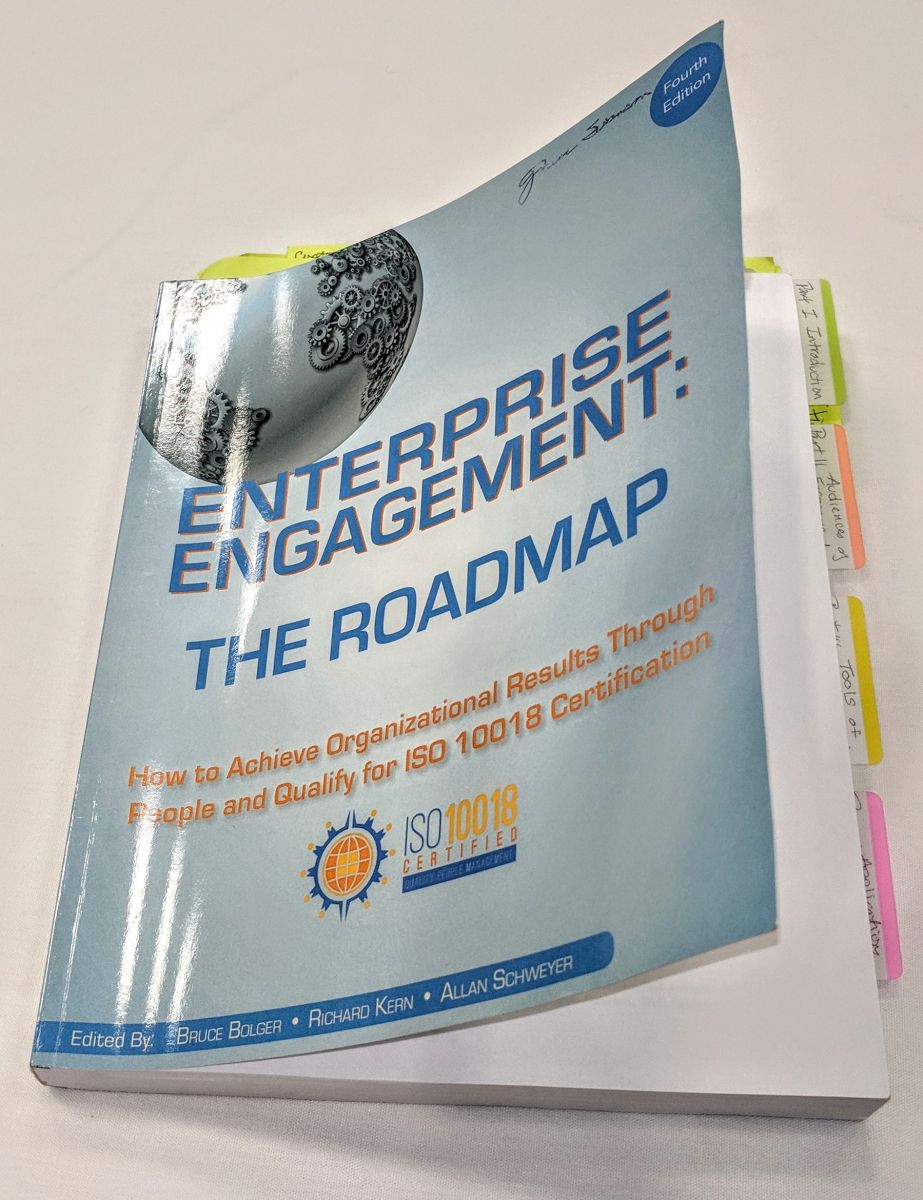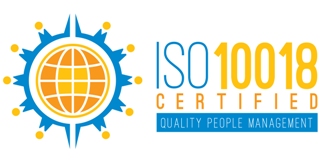Marketing Expert's Epiphany: Brand Success Depends on Culture
Brand leadership expert, keynote speaker and consultant Denise Lee Yohn, recently featured in an ESM article, explains how decades of marketing and brand-building experience led her to conclude that the entire organization is responsible for brand authenticity. Yohn is author of FUSION: How Integrating Brand and Culture Powers the World's Greatest Companies.
By Bruce Bolger
 While there’s plenty of talk about “culture” in the business media these days, it’s rarely a CEO priority. At most organizations, culture is more likely the spontaneous result of the CEO’s personality, organizational benefits and policies, and the leadership styles of individual managers.
While there’s plenty of talk about “culture” in the business media these days, it’s rarely a CEO priority. At most organizations, culture is more likely the spontaneous result of the CEO’s personality, organizational benefits and policies, and the leadership styles of individual managers.
To Denise Lee Yohn, culture is the foundation of successful brands, and sustainable success belongs to organizations that learn how to make the connection. These aren’t the words of a long-standing human resources executive, but rather the conclusion of a successful marketing executive who has now dedicated her career to keynote speaking and consulting on how to align what she calls “external brand identity and internal workforce culture.”
Starting with a B.A. in Psychology and Political Science from Northwestern University, Yohn’s career spans almost all aspects of marketing and brand-building. She was Associate Consumer Research Manager at Spiegel Inc.; Director of Strategy and Marketing at Jack in the Box; Vice President of Planning and Research at the agency Ammirati Puris Lintas; head of Account Planning at Grace & Rothschild; and finally General Manager, Vice President, Brand and Strategy, Corporate Marketing at Sony Electronics, before starting her own brand consulting business in 2004.
So what prompted a marketing executive with so much experience in marketing and research (and none in human resources) to make the connection between brand and culture? “The last half of my career has been focused on brand-building,” says Yohn, “and what became clear to me is that brand-building starts on the inside. Brands that we all admire have what I call a brand-culture fusion. What prompted me to write my book, FUSION: How Integrating Brand and Culture Powers the World's Greatest Companies, is that I had a specific experience with a client who simply could not see the connection between the organization’s brand and culture. If they didn’t get, I assumed there were many others like them.”
The Alignment of External Brand Identity and Culture
“Fusion,” Yohn explains, “is the integration and alignment with your external brand identity and internal workforce culture. In my view, internal brand engagement is just one aspect of that. My book is divided into how to set a foundation for brand-culture fusion and then it introduces five specific strategies you need to take to cultivate it.” To Yohn, it’s a strategic and systematic process led from the top.
The foundation, she asserts, is to “first ensure that your organization has a single overarching purpose and a single set of core values to guide everything you do as an organization and a brand. Then, you must assess where you are on your journey. You have to have clarity as to how to fill the gaps.” Most importantly, she believes executive leadership must take personal responsibility for championing brand-culture fusion.
The next five steps, she says, are to “design your processes and procedures to support the right conditions for encouraging the right behaviors; create culture-changing employee experiences by designing experiences that cultivate the right behaviors and attitudes; sweat the small stuff, using what seem to be mundane details of organizational life, rituals, policies and procedures to support the culture you desire; ignite employee brand engagement; and build your brand from the inside out.”
Yohn says that one of the big challenges is that most CEOs see brand as a marketing issue, when in fact it’s an organizational issue. In her latest Harvard Business Review article addressing what she believes is a distinct concept from brand-culture fusion, “6 Ways to Build a Customer-Centric Culture,” she writes that “companies have been trying to adopt customer-centricity for nearly 20 years now. But the CMO Council reports that “only 14% of marketers say that customer-centricity is a hallmark of their companies, and only 11% believe their customers would agree with that characterization.”
She continues: “Why do so many companies struggle to get customer-centricity right? The volume, velocity and variety of customer data that now exists overwhelms many organizations. Some companies don’t have the systems and technology to segment and profile customers. Others lack the processes and operational capabilities to target them with personalized communications and experiences.” That said, Yohn argues, “perhaps the greatest, barrier to customer-centricity is the lack of a customer-centric organizational culture. At most companies the culture remains product-focused or sales-driven, or customer centricity is considered a priority only for certain functions such as marketing. To successfully implement a customer-centric strategy and operating model, a company must have a culture that aligns with them—and leaders who deliberately cultivate the necessary mindset and values in their employees.”
6 Steps to Customer-Centricity
In the HBR article, Yohn says business leaders should take six actions:
1. Operationalize customer empathy. “Empathy is one of those buzzwords that sound really good, but very few companies actually understand what it means, much less practice it. Essentially, customer empathy is the ability to identify a customer’s emotional need, understand the reasons behind that need and respond to it effectively and appropriately. And it’s pretty rare. According to PwC, only 38% of U.S. consumers say the employees they interact with understand their needs.” She encourages organizations to use multiple methods to help all employees deeply understand the customer experience.
2. Hire for customer orientation. Yohn argues that the concept of customer-centricity begins with the “very first interaction with prospective employees; organizations should make thinking about customers and their needs a clear priority.”
3. Democratize customer insights. To Yohn, “For every employee to adopt a customer-centric mindset, every employee must understand the organization’s customers.”
4. Facilitate direct interaction with customers. Companies need to develop ways for employees to interact with customers directly, even in “back office” functions. After all, every employee impacts the customer experience in some way, even if indirectly, so every employee can benefit from interacting with customers to better understand them and learn about their successes and challenges.”
5. Link employee culture to customer outcomes. The adage “You can’t manage what you don’t measure” applies to customer centricity, too, she says. “Managers will be motivated and equipped to cultivate a customer-centric culture if they know if and how it impacts results, so organizations should ensure they establish and track the link between culture and customer impact.” Yohn notes that, according to Diane Gherson, head of Human Resources at IBM, “employee engagement drives two-thirds of her company’s client experience scores. That proves what Gherson and her team knew intuitively: If employees feel good about IBM, clients do, too.”
Yohn also reports on a Temkin Group model that calculates that “a typical $1 billion company can gain $775 million over three years through modest improvements such as reducing customer wait times or making a transaction easier for the customer.’
6. Tie compensation to the customer. “Organizations should reinforce a customer-centric culture through their compensation program…Company leaders are starting to recognize that culture and strategy go hand in hand. Only when customer-centric strategies are supported and advanced by culture will a company realize its customer-centric vision.”
So who can organizations turn to for expertise on how to fuse brand and culture? Ironically, as a former ad agency executive, Yohn doesn’t believe that advertising agencies will drive the process. “Ad agencies are in the communications business, not in the brand and culture business,” she says, “so they should understand it, but I don’t believe it will be appropriate for them to lead the process. I wrote FUSION because I hadn’t found any resources that explained how to align and integrate brand and culture,” she continues, but notes that she has only found a few firms that might be able to help.
For More Information:
Denise Lee Yohn
Brand Leadership Expert, Speaker
Master the Principles of Enterprise Engagement to Achieve Organizational Goals and Enhance Your Career
- Profit from a new systematic approach to engagement to enhance your organization’s brand equity; increase sales, productivity, quality, innovation, and safety, and reduce risks.
- Achieve ISO 10018 Quality People Management Certification to demonstrate your organization’s strategic commitment to people to your customers, employees, distribution partners, vendors, communities, investors, and regulators.
Live Education: Enterprise Engagement in Action Conference at Engagement World, April 3, 2019, in San Francisco, in conjunction with the Selling Power Sales 3.0 Conference. Learn about the economics, framework, and implementation process for an ISO certifiable approach to achieving organizational objectives by strategically fostering the proactive involvement of all stakeholders. Learn more and register now. 

In Print: Enterprise Engagement: The Roadmap 4th Edition, How to Achieve Organizational Results Through People and Quality for ISO 10018 Certification.
The first and most comprehensive book on Enterprise Engagement and the new ISO 9001 and ISO 10018 quality people management standards.
Online: The Enterprise Engagement Academy at EEA.tmlu.org, providing the only formal training on Enterprise Engagement and the new ISO 9001 and ISO 10018 quality people management standards. Provides preparation for professionals to support organizations seeking ISO 10018 employer or solution provider certification, as well as elective courses on Trade Show Engagement, Rewards and Recognition, Government, and other topics.
Plus: 10-minute short course: click here for a 10-minute introduction to Enterprise Engagement and ISO standards on Coggno.com.
 Services: The International Center for Enterprise Engagement at TheICEE.org, offering: ISO 10018 certification for employers, solution providers, and Enterprise Engagement technology platforms; Human Resources and Human Capital audits for organizations seeking to benchmark their practices and related Advisory services for the hospitality field.
Services: The International Center for Enterprise Engagement at TheICEE.org, offering: ISO 10018 certification for employers, solution providers, and Enterprise Engagement technology platforms; Human Resources and Human Capital audits for organizations seeking to benchmark their practices and related Advisory services for the hospitality field.
The Engagement Agency at EngagementAgency.net, offering: complete support services for employers, solution providers, and technology firms seeking to profit from formal engagement practices for themselves or their clients, including Brand and Capability audits for solution providers to make sure their products and services are up to date.
C-Suite Advisory Service—Education of boards, investors, and C-suite executives on the economics, framework, and implementation processes of Enterprise Engagement.
Speakers Bureau—Select the right speaker on any aspect of engagement for your next event.
Enterprise Engagement Benchmark Tools: The Enterprise Engagement Alliance offers three tools to help organizations profit from Engagement. Click here to access the tools.
• ROI of Engagement Calculator. Use this tool to determine the potential return-on-investment of an engagement strategy.
• EE Benchmark Indicator. Confidentially benchmark your organization’s Enterprise Engagement practices against organizations and best practices.
• Compare Your Company’s Level of Engagement. Quickly compare your organization’s level of engagement to those of others based on the same criteria as the EEA’s Engaged Company Stock Index.
• Gauge Your Personal Level of Engagement. This survey, donated by Horsepower, enables individuals to gauge their own personal levels of engagement.
For more information, contact Bruce Bolger at Bolger@TheEEA.org, 914-591-7600, ext. 230.


















